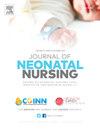确保新生儿PICC中心线定位的策略:范围审查
Q2 Nursing
引用次数: 0
摘要
目的描述和总结现有的证据,以确保新生儿PICC针尖在插入时的正确放置。方法在国际数据库中进行范围综述,遵循JBI标准。如果研究以英语、葡萄牙语或西班牙语发表,包括有关确保新生儿PICC尖端准确定位策略的信息,则有资格纳入研究。结果共纳入18篇文献。研究多集中在腔内心电图,其次是解剖标志、数学方程和实时超声。腔内心电图似乎是最准确的,但研究方法不同。结论IC-ECG的规范化使用有待进一步研究,RTUS的使用证据有待进一步扩大。此外,还需要对中心位置的x线图像的解剖参考进行标准化。研究结果不能形成黄金标准,这表明需要对不同策略进行比较研究。本文章由计算机程序翻译,如有差异,请以英文原文为准。
Strategies to ensure central PICC line positioning in neonates: scoping review
Purpose
to describe and summarize the existing evidence regarding strategies used to ensure correct PICC tip placement in neonates at the time of insertion.
Methods
Scoping review conducted in international databases, following JBI criteria. Studies were eligible for inclusion if they included information regarding strategies to ensure accurate positioning of the PICC tip in neonates, published in English, Portuguese or Spanish.
Results
18 articles were included in this review. Most studies focused on intracavitary electrocardiogram, followed by anatomical landmarks, mathematical equations and real-time ultrasound. Intracavitary electrocardiogram seems to be the most accurate, but the studies are conducted differently.
Conclusions
Further research is needed to standardize the use of IC-ECG, as well as expanding evidence of RTUS use. There is also a need to standardize the anatomical reference in x-ray image for central position. The results can't lead to a gold standard, suggesting the need for comparative studies between strategies.
求助全文
通过发布文献求助,成功后即可免费获取论文全文。
去求助
来源期刊

Journal of Neonatal Nursing
Nursing-Pediatrics
CiteScore
2.00
自引率
0.00%
发文量
143
期刊介绍:
Aims & Scope: This is the practical, bimonthly, research-based journal for all professionals concerned with the care of neonates and their families, both in hospital and the community. It aims to support the development of the essential practice, management, education and health promotion skills required by these professionals. The JNN will provide a forum for the exchange of ideas and information between the range of professionals working in this field; promote cooperation between these professionals; facilitate partnership care with families; provide information and informed opinion; promote innovation and change in the care of neonates and their families; and provide an education resource for this important rapidly developing field.
 求助内容:
求助内容: 应助结果提醒方式:
应助结果提醒方式:


